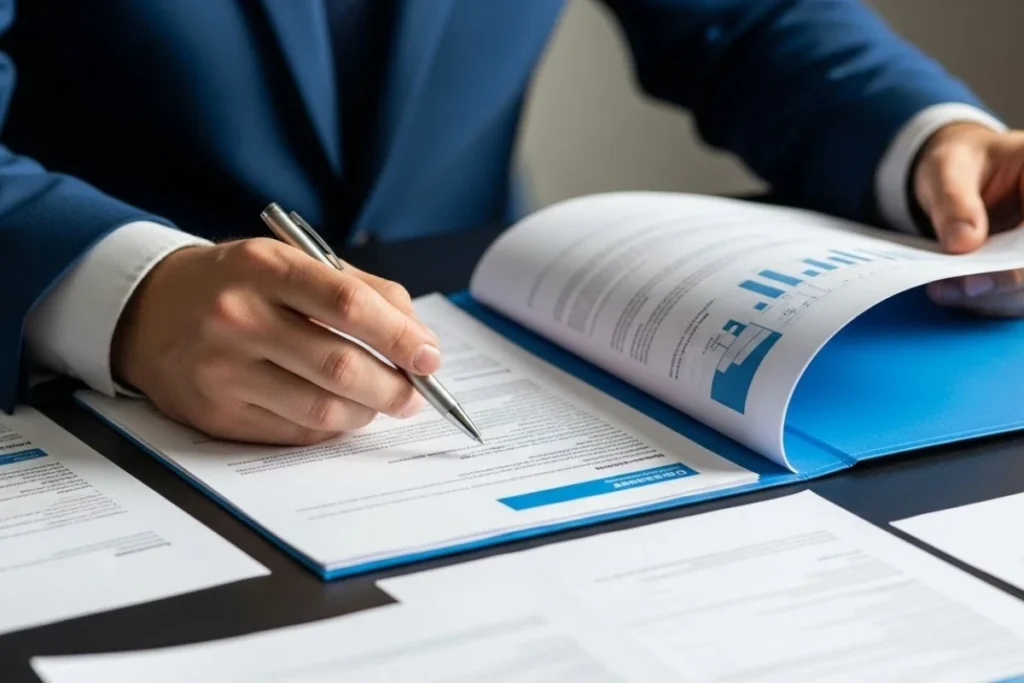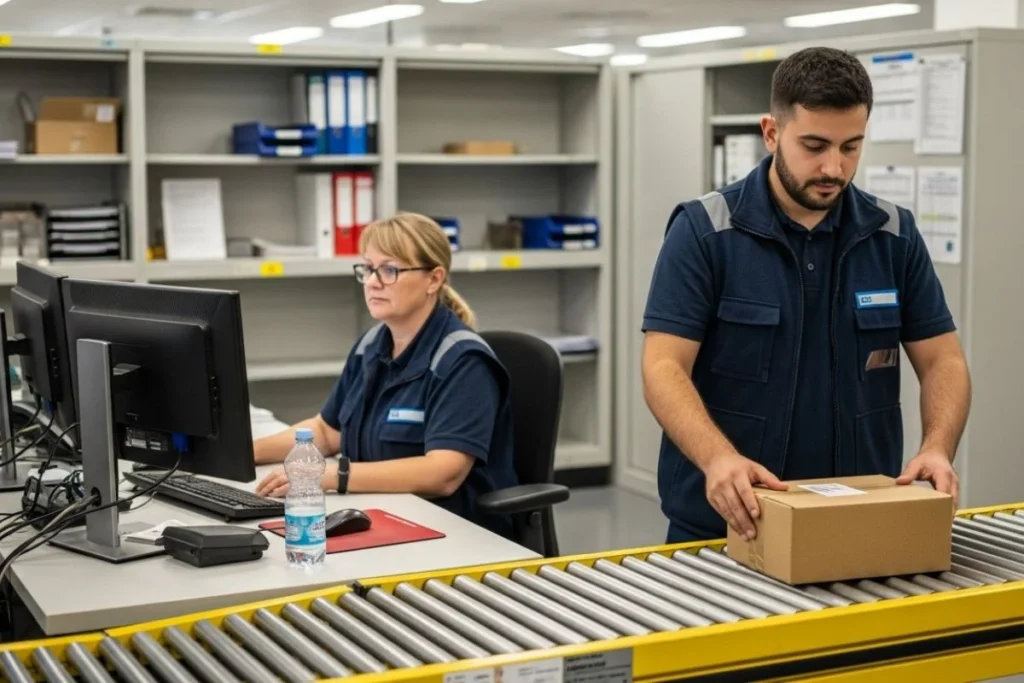If your business operates on a global basis, you are already aware of the significant impact that a mistake in the customs clearance process can have.
From delays to shipment holds, in international shipping, a single paperwork error can be costly time and money. This is why it is so important to become familiar with how to avoid customs delays.
Why Customs Compliance Matters for International Shipping
Delays at customs aren’t usually caused by random checks or changes to the process; most interruptions can be avoided with proper preparation. The fact remains that not only can errors be avoided with careful and methodical planning, but your cross-border logistics process can also be streamlined and expedited.
Customs compliance is key for clearance delays:
- Not to affect your delivery timelines
- Disrupt your production schedules
- Create additional storage fees
- Add unnecessary penalties
- Cause missed sales
- Damage your reputation and customer satisfaction
When dealing with international business, managing cross-border operations, handling high-volume shipments for e-commerce, or just-in-time manufacturing, a delay of even one day can be very costly.

Learning how to avoid customs delays and the most common errors that lead to them is essential to avoid disruptions in your operations and ensure the smooth passage of your products across the borders.
Common Customs Documentation Mistakes That Cause Delays and Tips to Prevent Them
Identifying the most common mistakes not only allows you to better plan your strategy to avoid them, but also will strengthen your staff training and improve the accuracy of your documentation.
It is very well known among businesses dealing with global commerce that most of the errors causing customs-related delays usually have to do with wrong or incorrect documentation.
Let’s take a look at the most common mistakes and how to avoid customs delays by avoiding them and planning, staying ahead of the game:
1. Incorrect or Vague HS Codes
Harmonized System (HS) codes are universal classifications used to categorize different products for customs purposes. If the code is incorrect and your products are misclassified, you might:
- Be overpaying import duties
- Violate import laws
- Attract unexpected audits
- Goods could be seized and held when returned.
To avoid this:
- Make sure you are using the full harmonized tariff schedule and the right one according to the country you are doing business with, whether Mexico, U.S.A. or other.
- Always double-check that the HS code you are using with your products aligns correctly with both their description and intended use.
2. Incomplete or Inaccurate Commercial Invoices
Commercial invoice accuracy is another of the most common mistakes. As part of the customs clearance process, commercial invoices are one of the documents that are closely looked over. Unfortunately, many businesses forget to include important details or type in the wrong ones.
To avoid this, make sure you double-check your invoices to confirm there are no missing key details or incorrect ones, such as:
- Complete buyer and seller details and address
- Invoice number and correct date
- Accurate product descriptions
- Model or part numbers, materials, and other specifications needed
- Quantity and Unit of Measure
- Unit Price and Total Price
- Currency type
- Country of Origin
- All applicable INCOTERMS
- Payment details
- Shipping details
- HS Codes
- Signatures
Always review your commercial invoice before submitting it, and make sure it is compliant with the specific countries you are shipping to and from.
3. Inconsistent Information Across Documents
Mismatches between documentation, even if small discrepancies, are a red flag for customs, which will either return the shipment or hold it for additional inspection.

Verify that the data on the Bill of Lading, the Packing List, and the Commercial Invoice match. Customs officers view inconsistent information as a potential sign of fraud.
To avoid this, you can use digital templates to ensure correct and matching information among your documentation.
4. Neglecting Country-Specific Import Requirements
Another factor to consider when looking into how to avoid customs delays is the country-specific import regulations. The rules and requirements may vary depending on the country to which you are importing or exporting.
For example, some countries require certificates of origin, have different labeling rules, ask for fumigation reports, or health certificates. Additionally, the restriction of certain products is contingent upon the specific country.
To avoid this, do proper research on the requirements specified by the countries you are dealing with or partner with a reliable 3PL like EP Logistics, which offers customs broker expertise, verifying all requirements are properly prepared.
5. Incorrect Declaration of Cargo Value
Under-declaring or over-declaring the value of your products being shipped is another common mistake. Cargo valuation is crucial in international shipping compliance and a key factor on how to avoid customs delays.
This mistake will create fines, cause your shipments to be held, and contribute to trust issues with customs authorities. Remember, cargo value determines import duties and taxes, and you don’t want a mistake in documentation to be flagged as an attempt to avoid paying them.
To avoid this:
- Always revise your documentation and ensure consistent valuation methods are being used.
- Keep your detailed invoices and transaction records accurate, organized, and verifiable.
- Employ a skilled customs broker to assist you with accurate cargo declarations and valuation.

Operational Mistakes That Lead to Customs Delays
The rest of the most common mistakes are not in the documentation itself, but in the preparation before the products are shipped and other operational errors:
6. Not Planning for Duties, Taxes, and Fees
Depending on the terms you have agreed to, payment of import duties and taxes falls either on the buyer or the seller. For example, in DDP (Delivered Duty Paid) shipments, this responsibility falls entirely on the shipper.
Delays at customs happen when this responsibility wasn’t properly clarified, and the responsible party either failed to prepay or to estimate the amounts to be paid properly.
To avoid this: Make sure responsibilities for payments are properly clarified. If you will be responsible, ensure funds are available at the time of import and do not underestimate payment timelines, as they are essential when planning how to avoid customs delays.
7. Failing to Prepare for Random Inspections
Strategic planning necessitates being equipped to confront any unforeseen obstacles, such as unexpected customs inspections. One common mistake that results in delays at customs is the lack of customs inspection preparation.
Keep in mind that these checks are often random, and even compliant shipments can be targeted for an unexpected inspection.
To avoid this:
- Always consider some extra buffer time when planning your delivery schedules, in case you ever undergo a surprise inspection.
- Ensure your documentation is well organized and accessible for easy review.
- Maintain a record of the documents needed for every shipment, and instruct your employees on how to react appropriately to requests for documentation and inspections.
How to Streamline Your Customs Clearance Process
Improving the customs clearance processes is more than just trying to avoid penalties, it is about:
- Learning how to avoid customs delays
- Enhancing your delivery times
- Preventing unnecessary fees
- Reducing costs
- Taking care of your business reputation
Here are some proven strategies that will help you achieve this:
Leverage Customs Preclearance Where Available
Customs preclearance programs are available in certain countries, which enable you to clear your shipments before their arrival, provided that they meet all the necessary criteria.
Implementing this type of software presents an opportunity to expedite delivery times and decrease inspection rates.
Work With Experienced Customs Brokerage Partners
Partnering with trusted logistics service providers that offer experienced customs brokerage services is a great idea.
A custom broker with proven experience will ensure:
- Your documentation is prepared and filled in correctly
- Ensure that the remaining prerequisites are met
- Ensure the valuation and categorization of your goods are accurate
- Make sure your shipment is compliant during the clearance process
- Assist you in overcoming challenges quickly
- Enhance your cross-border trade
Remember that it is also important to verify their experience and that they are knowledgeable of the rules and regulations of the specific country you are importing/exporting to.

With more than two decades of experience, we at EP Logistics are experts in U.S. and Mexican customs procedures, helping various industries manage their customs documentation requirements.
EP Logistics: Your Partner in Customs Compliance
EP Logistics is a renowned 3PL provider and a broker expert. Our objective is to ensure that you are at ease, knowing that professionals are responsible for the proper documentation and customs regulations on your behalf.
With deep experience in cross-border logistics, we tailor our services to your unique business and supply chain needs, and we offer you additional complimentary services that link all of your operations under seamless no headache trade.
Our team at EP Logistics provides you with:
- Trusted and proven experienced customs broker expertise across both the U.S. and Mexico.
- Support with document preparation and audits.
- Handling HS code classification
- Ensuring proper valuation of your shipments.
- Reliable Ecommerce fulfillment services
- Strategic warehouse location selection to optimize the customs clearance process and speed up your deliveries.
Whether scaling to new international markets or improving your existing global operations, at EP Logistics, we help you strategically plan how to avoid customs delays and optimize your customs operations to keep your business growing and your customers happy.
If you are ready to optimize your customs processes, reduce risks, and improve customer satisfaction, contact EP Logistics’ team today and learn about all of our customizable solutions.



